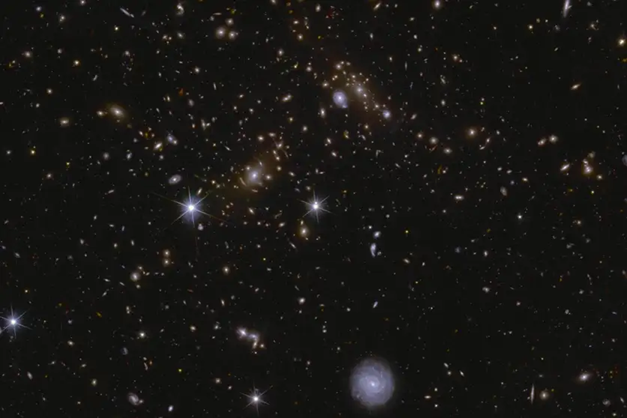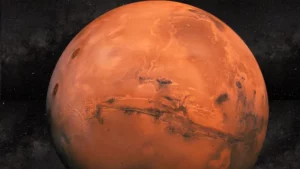Euclid Space Telescope Unveils 26 Million Galaxies in Groundbreaking First Data Release

The Euclid Space Telescope, launched by the European Space Agency (ESA), has released its first large-scale images, revealing an astonishing 26 million galaxies—some located as far as 10.5 billion light-years away. This historic milestone marks a major leap in mapping the universe and understanding its mysteries.
🌌 A Mission to Map the Cosmos in 3D
🚀 Euclid’s Mission:
- Launched in July 2023
- Aims to survey one-third of the sky over six years
- Will create the most detailed 3D map of the universe ever made
The telescope’s primary goal is to shed light on the behavior of dark matter and dark energy, two enigmatic forces that shape the universe. By capturing vast amounts of data, Euclid will provide astronomers with unparalleled insights into the cosmos.
📷 First Data Release: A Glimpse into the Universe
The first batch of images from Euclid focuses on three “deep field” regions—small patches of sky examined in extraordinary detail. These regions cover 63 square degrees, an area comparable to the size of 300 full moons in the night sky.
🔍 Over time, Euclid will revisit these areas 30 to 52 times, improving image clarity and capturing subtle cosmic changes.
🛠️ Key Takeaway: The first data release represents less than 0.5% of Euclid’s total mission, but it already offers astronomers a wealth of new discoveries.
🌠 “For individual galaxies and their properties, there’s so much science to explore. This is the first time we’ve conducted such a large space-based survey in both near-infrared and optical wavelengths.” — Will Percival, University of Waterloo
🔭 Revolutionizing the Study of Gravitational Lensing
One of the most exciting breakthroughs in Euclid’s early data is the discovery of hundreds of strong gravitational lenses. These cosmic phenomena occur when a massive object—such as a galaxy—bends and magnifies light from a more distant object, creating stunning arc-like or ring-shaped patterns.
Why It Matters:
✅ Previously, gravitational lenses were found manually using Hubble Space Telescope (HST) ✅ Euclid automates this process, enabling mass discoveries in a single survey ✅ AI-powered analysis has already identified 500 new gravitational lenses, doubling the previous count
🗣️ “The statistics are phenomenal. Euclid will collect 200 times more data, revolutionizing our understanding of galaxy evolution and the structure of the universe.” — Will Percival
🤖 AI & Big Data: The Future of Astronomy
With 35 terabytes of data captured in just one week (equivalent to 200 days of high-quality video), manually analyzing each galaxy would take over 100 years. Thankfully, AI-driven models are supercharging research by processing data in weeks instead of years.
💡 What AI Brings to the Table: ✔️ Accelerates discovery and classification of galaxies ✔️ Enhances pattern recognition for gravitational lensing ✔️ Enables astronomers to ask new questions in record time
🔬 “With AI, we can explore cosmic questions in weeks rather than decades.” — Mike Walmsley, University of Toronto
🚀 What’s Next for the Euclid Mission?
📆 Upcoming Data Release:
- Next batch arrives in late 2025
- Will include one full year of observations
- Covering 2,000 square degrees (30x more than the first batch)
- Storage needed: 2,000 terabytes
🔭 With each new image, Euclid brings us closer to unlocking the secrets of dark matter, dark energy, and the universe itself. As its mission progresses, astronomers expect even more groundbreaking discoveries that could reshape our understanding of space.
🌠 Final Thoughts: The Future is Bright for Euclid
The Euclid Space Telescope is revolutionizing astronomy with unprecedented images and cosmic insights. As more data is released, researchers will continue to decode the mysteries of the universe—one galaxy at a time. Stay tuned for the next big discovery! ✨







